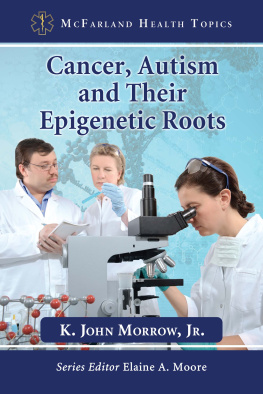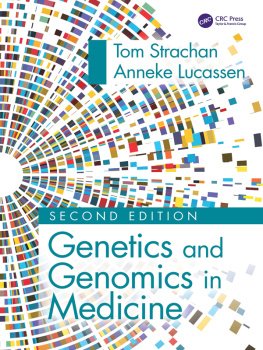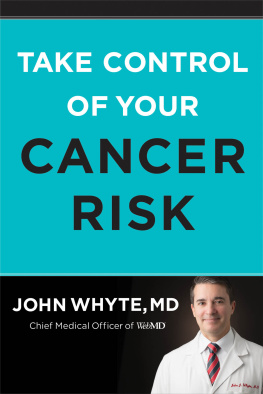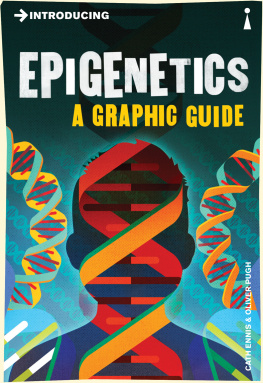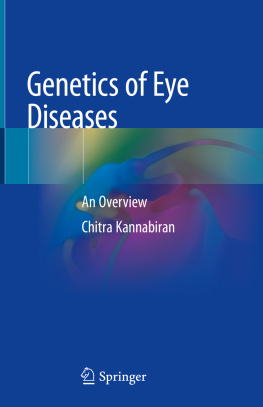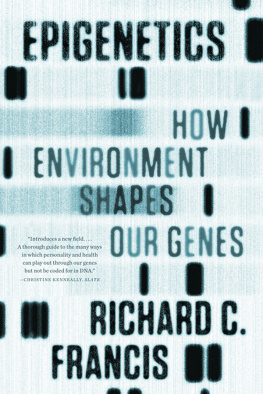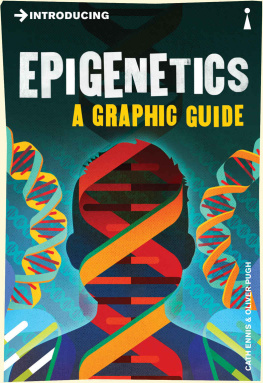
MCFARLAND HEALTH TOPICS SERIES
Living with Multiple Chemical Sensitivity: Narratives of Coping. Gail McCormick. 2001
Graves Disease: A Practical Guide. Elaine A. Moore with Lisa Moore. 2001
Autoimmune Diseases and Their Environmental Triggers. Elaine A. Moore. 2002
Hepatitis: Causes, Treatments and Resources. Elaine A. Moore. 2006
Arthritis: A Patients Guide. Sharon E. Hohler. 2008
The Promise of Low Dose Naltrexone Therapy: Potential Benefitsin Cancer, Autoimmune, Neurological and Infectious Disorders. Elaine A. Moore and Samantha Wilkinson. 2009
Living with HIV: A Patients Guide. Mark Cichocki, RN. 2009
Understanding Multiple Chemical Sensitivity: Causes, Effects, Personal Experiences and Resources. Els Valkenburg. 2010
Type 2 Diabetes: Social and Scientific Origins, Medical Complications and Implications for Patients and Others. Andrew Kagan, M.D. 2010
The Amphetamine Debate: The Use of Adderall, Ritalin and Related Drugs for Behavior Modification, Neuroenhancement and Anti-Aging Purposes. Elaine A. Moore. 2011
CCSVI as the Cause of Multiple Sclerosis: The Science Behind the Controversial Theory. Marie A. Rhodes. 2011
Coping with Post-Traumatic Stress Disorder: A Guide for Families, 2d ed. Cheryl A. Roberts. 2011
Living with Insomnia: A Guide to Causes, Effects and Management, with Personal Accounts. Phyllis L. Brodsky and Allen Brodsky. 2011
Caregivers Guide: Care for Yourself While You Care for Your Loved Ones. Sharon E. Hohler. 2012
You and Your Doctor: A Guide to a Healing Relationship, with Physicians Insights. Tania Heller, M.D. 2012
Autogenic Training: A Mind-Body Approach to the Treatment of Chronic Pain Syndrome and Stress-Related Disorders, 2d ed. Micah R. Sadigh. 2012
Advances in Graves Disease and Other Hyperthyroid Disorders. Elaine A. Moore with Lisa Marie Moore. 2013
Cancer, Autism and Their Epigenetic Roots. K. John Morrow, Jr. 2014
Living with Bipolar Disorder: A Handbook for Patients and Their Families. Karen R. Brock, M.D. 2014
Cancer, Autism and Their Epigenetic Roots
K. John Morrow, Jr.
MCFARLAND HEALTH TOPICS
Series Editor Elaine A. Moore

McFarland & Company, Inc., Publishers
Jefferson, North Carolina
LIBRARY OF CONGRESS CATALOGUING DATA ARE AVAILABLE
BRITISH LIBRARY CATALOGUING DATA ARE AVAILABLE
e-ISBN: 978-1-4766-1563-9
2014 K. John Morrow, Jr. All rights reserved
No part of this book may be reproduced or transmitted in any form or by any means, electronic or mechanical, including photocopying or recording, or by any information storage and retrieval system, without permission in writing from the publisher.
Front cover: Medical laboratory iStock/Thinkstock
McFarland & Company, Inc., Publishers
Box 611, Jefferson, North Carolina 28640
www.mcfarlandpub.com
Acknowledgments
Epigenetics is an unusually complex, rapidly changing discipline. It is impossible to cover every aspect of this field, and new information is being added constantly, so that any description will be out of date by the time it is available to the reader. My goal was to give a very broad overview of this field, in a readable format. I have not provided details on many of the elegant representations of the precise modes of action of epigenetic signals. There are many fine reviews of this material that are accessible to both professional scientists and to general readers. Rather I have tried to present the scope of the field and its social and political ramifications. Inevitably, this involves simplifying and leaving out material. Since this is not intended as a scientific review of the field, it is not comprehensive, and in many cases I have greatly condensed or omitted complicated scientific models.
Furthermore, I have added at numerous points in the chapter notes information which I believe will amuse and inform the reader. However, many of these are tangential, and readers focused on the nature of epigenetics can pick and choose among these.
I have been very fortunate that many of the outstanding investigators and scientists in epigenetics and related disciplines have offered their time and critical abilities in reviewing this manuscript. However, I have drawn my own conclusions and made my own policy recommendations in the final chapters. These are my own opinions. Any errors or omissions in this book are strictly my own.
My thanks go out to Dr. Dean Edwards, Dr. Mike Skinner, Dr. Shuk-Mei Ho, Dr. John McCarrey, Dr. Heather Patisaul, Dr. Dana Dolinoy, and Dr. Wilber Baker, who have read and critiqued various sections of this manuscript. Dr. Douglas Stocco was especially helpful in introducing me to a number of these individuals.
Special thanks to Dr. Tesseny Sandgathe, who provided many useful comments and suggestions, and to Elise Morrow and Garima Naredi, whose artistic talents are seen in a number of the drawings and figures that accompany the manuscript.
My close friend, mystery writer Jack Kerley, gave me encouragement and writing suggestions and helped me wend my way through the literary jungle to find an agent.
That agent is Lisa Hagan who is one of my major fans. Her many thoughts and comments encouraged me to move forward with the book. And she led me to my publisher and its Health Topics series and series editor Elaine A. Moore.
And finally to Julie, who has supported and encouraged me on this journey for so many years.
Preface: A Scientific Detective Story
This book is a personal scientific detective story delving into the exploding frequencies of a group of mental diseases affecting large segments of our society: autism, Alzheimers disease, schizophrenia and bipolar disorders among many others. But theres more: an ugly collection of physical ailments, including cancer, the most carefully studied, diabetes and heart disease, just for starters.
It has long been assumed that those who were stricken with these diseases owed their fate to an unlucky combination of genes and environment. But in recent years a third player in this dance has been identified. This contributor was so ignored that twenty years ago even most biologists hardly gave it a second thought.
All this is changing now, as we welcome you to the world of epigenetics. While the term has a certain exotic air and high-tech sound to it, it is not a difficult concept, and it opens up a new level of understanding of the fundamental origins of health and sickness.
Basically put: As the incidence of these illnesses has ramped up, so has the exposure of the population to a witches brew of pesticides, plasticizers, cosmetics and industrial chemicals. Other sources of concern are produced through industrial processes, such as heavy metals, petroleum products and radiation. Many of these substances are known to affect the behavior of genes through epigenetic routes. And now evidence is piling up, connecting exposure to them with the ascendency of these diseases.
I have written this book because I believe there is a wealth of evidence demonstrating that epigenetic mechanisms play a critical, and previously unrecognized, role in driving many of these diseases. In this unfolding story I will lay out the evidence and offer a course of action to slow and reverse this epidemic.
Next page
